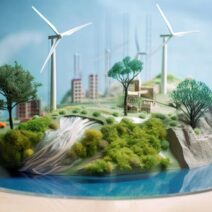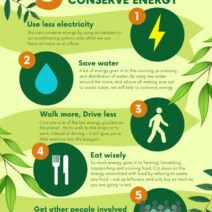In the cradle of nature, deer have long embodied grace and resilience. These creatures wander through vast landscapes, serving as a barometer for the health of their ecosystems. However, their existence hangs in a delicate balance, increasingly threatened by the pernicious effects of climate change. As the seasons shift erratically and habitats transform, a pressing question emerges: are deer dying due to shifting climates? To address this, we must delve deeply into the intricate tapestry of environmental dynamics that define their lives.
First and foremost, the plight of deer is a reflection of the broader ecological shifts instigated by a warming planet. Climate change acts as a conductor of a symphony in which every organism plays a critical note. In this being, deer are both part of the ensemble and affected audience, witnessing the alterations in their seasonal rhythms. The delicate syncopation of their breeding cycles, migration patterns, and habitat availability is now undermined, leaving these majestic creatures to navigate dissonant realities.
The crux of the issue lies in the transformation of their habitats. Traditionally, deer have thrived in ecosystems characterized by seasonal changes that dictate food availability and reproductive timing. However, as temperatures rise, these patterns become increasingly erratic. The budding of spring flora now emerges earlier, while autumn’s retreat may arrive much later than deer’s ancestral adaptations dictate. The mismatch is akin to a carefully orchestrated ballet where dancers forget their choreography. This uprooting of seasonal predictability disrupts the food supply trees, grasses, and shrubs; the very sustenance upon which deer depend for survival.
Moreover, changing temperatures amplify the threat of droughts and floods, unleashing a cascade of repercussions on deer populations. When droughts strike, vegetation—the primary dietary source for deer—becomes scarcest. Conversely, heavy rains can lead to soil erosion and habitat degradation, rendering food sources less nutritious or creating clusters of impasse in their movements. This nutrient impoverishment becomes a silent predator, preying on the vitality of these animals, robbing them of the stamina needed for survival.
Deer are not merely passive victims; they exhibit multilayered adaptability in their quest for survival. However, adaptation can only stretch so far. Over generations, deer have displayed remarkable plasticity—modifying their diets or altering social structures in response to shifting environments. Yet, the current pace of climate change presents a multifaceted crisis that outstrips the adaptive capabilities of even the most resilient species. The stressors of malnutrition, paired with the intensified competition for limited resources, create an unforgiving gauntlet through which deer must navigate.
Equally salient is the outbreak of emerging diseases that flourish under new climatic conditions. As the climate shifts, so do the habitats of parasites and pathogens. Warmer winters allow ticks to thrive, increasing the prevalence of Lyme disease among deer populations. Likewise, opportunistic diseases such as epizootic hemorrhagic disease (EHD) gain a foothold in regions where deer previously thrived without major health concerns. The introduction of these ailments serves as a harbinger of doom, reducing population numbers and exacerbating the fragility of deer communities already teetering on the brink.
Human activities further compound these challenges. Urbanization and agriculture encroach upon habitats, fragmenting the landscape like a jigsaw puzzle with missing pieces. This habitat fragmentation prohibits deer from migrating in search of food or mates. Instead, they become trapped within isolated patches, their genetic diversity dwindling—a recipe for disaster as stagnant populations struggle to adapt to the relentless pressures of climate change.
In examining the correlation between climate change and deer populations, it becomes evident that we are entwined in a web of interdependence. Humans, as stewards of the environment, wield the power to either mitigate or exacerbate these dire circumstances. Addressing climate change requires concerted action, from reducing greenhouse gas emissions to restoring habitats and fostering biodiversity. It necessitates a paradigm shift towards sustainable practices that honor the delicate balance of ecosystems that provide shelter for deer and myriad other species.
Furthermore, raising awareness about the intricacies of deer populations and their vulnerabilities to climate change is integral. Environmental education serves as a bridge, connecting people to the natural world and illustrating the complex relationships that underpin our existence. By emphasizing the consequences of our actions, we can inspire a movement towards greater ecological responsibility and a deeper appreciation for the enchanting beings that roam our forests.
Ultimately, the question remains: are deer dying due to shifting climates? The answer is both nuanced and resounding. While deer may not be dying en masse, their populations are undoubtedly feeling the sting of climate change’s repercussions. The intricate interplay of environmental factors—temperature shifts, habitat devastation, disease emergence, and human encroachment—paints a bleak portrait for these majestic animals. However, as stewards of this Earth, we hold the potential to alter this narrative, to advocate for a future where deer, along with countless other species, can thrive amidst the changing tides of climate. In doing so, we forge a path toward harmony, where resilience reigns supreme and the interconnectedness of life endures.




